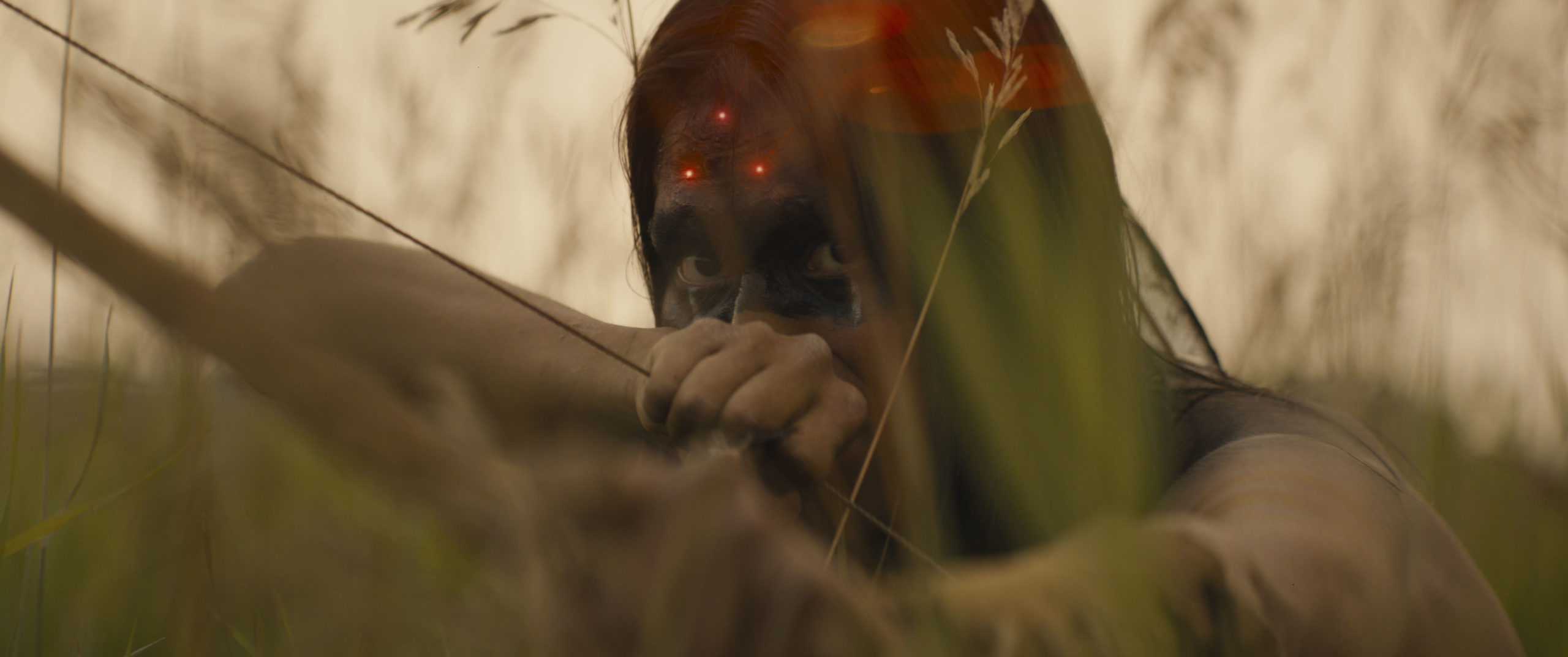The Predator franchise has been a remarkable exercise in longevity despite diminishing returns for 35 years. As such, a scaled-down and retitled prequel reduced to streaming fodder seems an unsurprising move at this point––or at least the only feasible one. The tragic irony is that Prey, a Dan Trachtenberg-directed addition set 300 years ago, is the first franchise entry that is as good (and at times a mite better) than the original.
Part of that success is a general boiling-off of any extraneous mythology or overwrought concepts. Here, much like Arnold Schwarzenegger’s 1987 close encounter, Prey relishes the simplicity of an indefatigable hunter, their quarry, and the wilderness in-between. In the Comanche Nation circa 1719 we’re introduced to Naru (Amber Midthunder), a skilled hunter hellbent on proving herself to the rest of her camp by tracking and killing a mysterious beast stalking the wilderness nearby. In addition to an impeccably trained dog, Naru’s older brother and would-be protector, Taabe (Dakota Beavers), takes up arms to fulfill her rite of passage on the Big Hunt. With these elements, Prey prioritizes a clean, simple story told well. The bond between these siblings and their place within their community is paramount here. Trachtenberg and scribe Patrick Aison are so keenly focused on the core narrative that you’re forgiven for thinking the mandible-mouthed hunter was included as a studio note.
Keeping things on the leaner side isn’t the only cue Trachtenberg takes from John McTiernan. We’re introduced to Naru via Comanche voiceover before it is repeated in English à la The Hunt for Red October. It’s worth noting that Trachtenberg attempted to replicate the Red October effect to a tee but scrapped that idea. What remains, however, establishes an empathetic lens all the same. White, colonizing French trappers, positioned as an ever-encroaching threat, speak in unsubtitled French. It renders them the outsiders they are. Though a full Comanche script would have given things a sharper edge of realism, the decision for spoken English seems as much a thematic choice as it does a logistical one. The specter of colonialism has just as much an imposing presence in Prey as a camouflaged space behemoth. The extent of Predator’s character work was an ability to make you root for its doomed mercenaries, with a handful of playful barbs at Reagan-era jingoism. That’s no small feat—one genre films fail at constantly—but Prey threads Naru’s plight with the fabric of a sordid history that makes for an often more interesting film. And it never loses sight of the bloodshed you came for.
Despite the muscle-bound Austrian action hero at its center, the biggest star of John McTiernan’s 1987 classic has always been creature effects wizard Stan Winston. His basic design of the intergalactic game hunter was an ineffable blend of creepy crawler and kind of arcade-game-cool that’s hard to devalue. Persevering through more than a handful of lackluster sequels and spinoffs, the Predator has always been, undeniably, cool. Trachtenberg, keenly aware, maximizes this to full potential. Prey doesn’t need to convince you a Predator is cool, instead playfully calibrating what we already know about the marquee alien’s capabilities within the 18th-century setting. In what might seem like a thankless role, Dane DiLiegro executes a brutal physicality as the now-bare-bones creature and siphons every ounce of infrared carnage he can. This is, after all, a Predator film.
Amber Midthunder is more than up to the task of returning every blow in kind, and their hunter-hunted dynamic is always engaging across a breathless runtime. Although there’s a more narrow scale to Prey’s brutality, cinematographer Jeff Cutter, who also shot Trachtenberg’s 10 Cloverfield Lane, knows how to make as much out of well-placed vistas as ferocious set pieces. Amid the ruthless efficiency there emerges a bit of solace in the well-lensed natural landscape, punctuated by Sarah Schachner’s elegant score.
If the ‘87 Predator works because it’s foremost a high-spirited, well-oiled killing machine, Prey does more to honor that legacy than any previous follow-up. This while expanding its horizons to provide more food for thought than is frankly required of it. Aside from the sparse bit of wincing fan service (such as odd prominence for what would usually be a mere easter egg), Prey is a nimble bit of carnage via perfect late-summer blockbuster. That such a worthy successor gets relegated not to the cinema but the streaming wars is a brutal slaughter in its own right.
Prey comes to Hulu on Friday, August 5.

